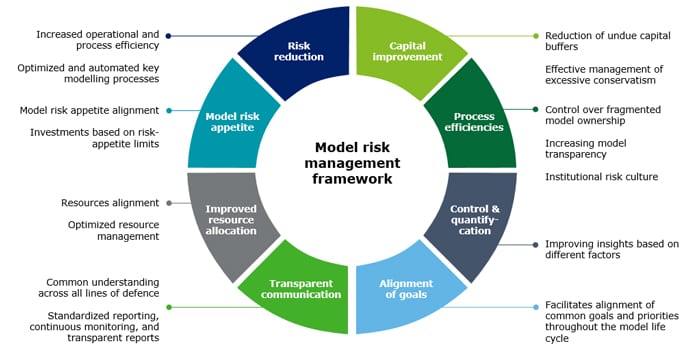Article

Model Risk Management (MRM)
Driving the value in modelling
A clearly defined Model Risk Management (MRM) framework with a strong management insight in the monitoring of the models allow institutions to strengthen their decision making processes and improve their profitability.
Model Risk Management for better business decision
Banks’ quantitative systems are complex and many stakeholders have to take decisions based on risk quantitative techniques. A clearly defined Model Risk Management (MRM) framework with a strong management insight in the monitoring of the models allow institutions to strengthen their decision making processes and improve their profitability.
A New Risk Type?
Regardless of the organization’s size and structure, regulators require that enterprise MRM frameworks encompass all relevant aspects of the MRM life cycle with clearly assigned roles and responsibilities:
- Organisation and Governance (MRM Organisational Design, Policy Development, MRM Program Design)
- Model Lifecycle Management (Model Inventory, Model Classification, MR Documentation, Model Follow-Up)
- Model Control Framework (Data Quality Review, Validation Approach, Model Independent Review, Model Control Process Optimization)
- Model Risk Quantification (Practice Development, Model Risk Analytics, Model Risk Mitigation)
- Model Risk Management Processes & Technology (Platform Design, Platform Selection, Data Quality Management)
Model risk scope extension
The scope of which models are falling into the foundation of an effective MRM framework is considered as part of the MRM strategy or roadmap that the bank must implement. The priority is not only on internal models but also on stress testing models, as well as on business decision models. Model risk goes beyond IRB capital models, pre-payment for credit, pricing and credit scoring models; valuation models are also on the radar as well as ALM and Compliance models (ex. Anti-Money Laundering).
Exhibit 1
Main regulatory references in US and Europe
Banks recognize the importance of complying with European and US regulations, as well as the importance of continuing to align to the internal view of model risk.
US regulation opened the way for Model Risk Management practices in 2011 with the first Supervisory Guidance issued by OCC-FED. European regulation is now following the trend, with various publications from the EBA, the Bank of Spain, Bank IT, the Polish Financial Supervisory Authority and the PRA.
Exhibit 2
Capturing value from an embedded MRM framework
An effective and robust MRM framework, defined by an end-to-end MRM approach, improves earnings through cost reduction, loss avoidance, and capital improvement.
Cost reduction and loss avoidance come mainly from increased operational and process efficiency in model development and validation.
Auch interessant
Targeted Review of Internal Models - TRIM
A significant effort of the SSM to contribute to a responsible use of regulatory capital models
Deloitte Treasury & Risk Management Survey 2017
Digitale (R)Evolution?





